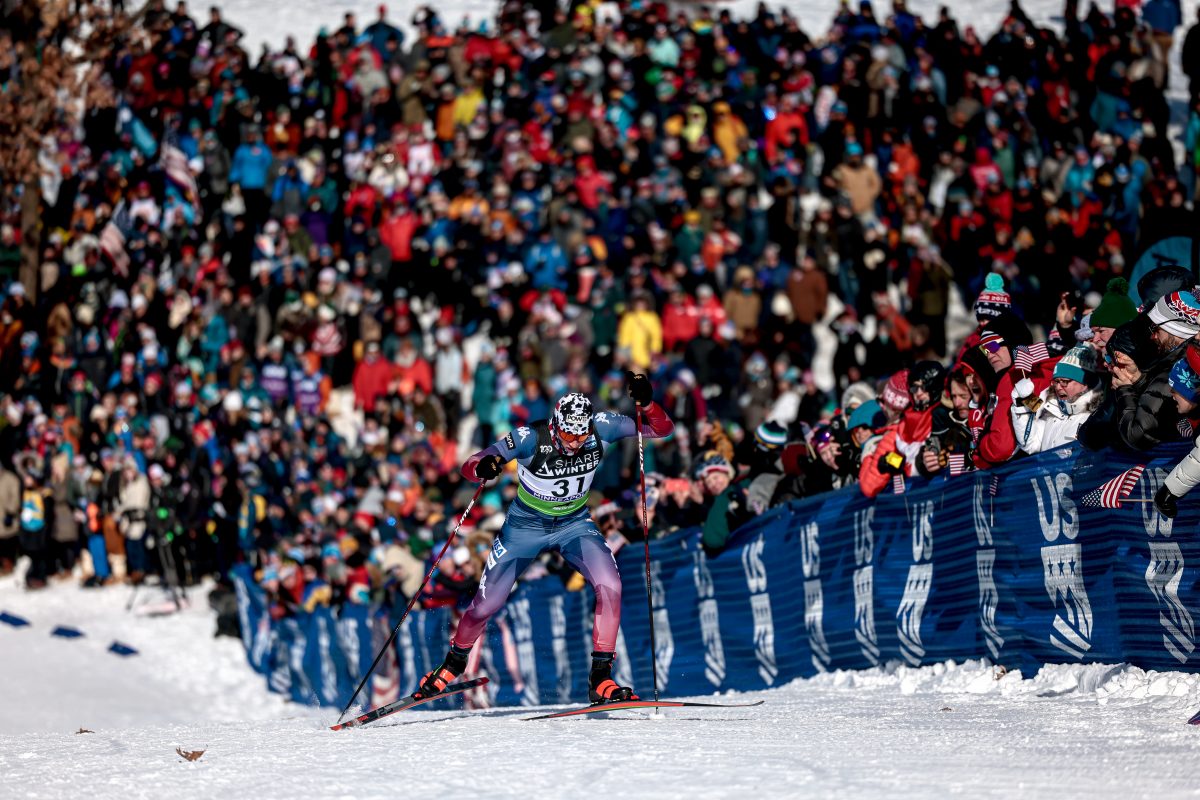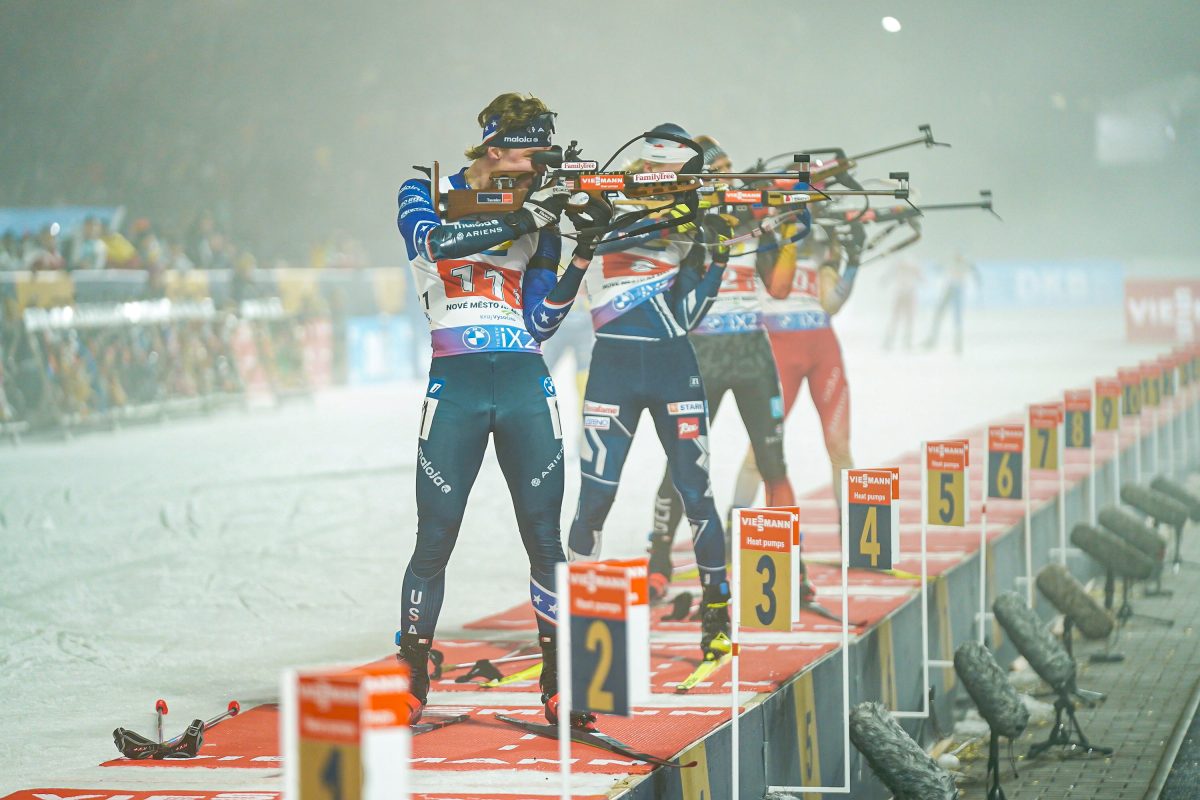This is the fourth article in a four part series documenting the 2008 Ski Mountaineering Season from the perspective of Lyndsay Meyer and Nina Silitch.
2008 Ski Mountaineering Season Recap – Part 1
2008 Ski Mountaineering Season Recap – Part 2: World Championships
2008 Ski Mountaineering Season Recap – Part 3: Pierra Menta
We decided last minute to throw another race into the schedule before our grand finale, the Patrouilles des Glaciers (PDG). Nina and I had planned to do a small local race in Chamonix, but it was canceled due to dangerous snow conditions. It was now April and the snow was wet and heavy, and the course was on a Southern exposure ripe for avalanche. Instead, we traveled to Italy to Valsavarenche to do the Tour du Gran Paradis! We love racing in Italy, the food is good, the crowds excited, and the prizes are awesome. This race was held bi-annually and the course would travel close to the summit of the Gran Paradiso, one of Europe's eighty-two four thousand meter peaks and the highest peak entirely within Italy.
It was a beautiful but cool morning as we prepared our gear. We would travel on glacier for part of the course and need to be roped and travel on a fixed line while crossing a huge crevasse that had opened near the summit route. The course would allow us to acclimatize to higher altitudes, and race with Tara, our third teammate for the PDG. Tara was racing with another woman, but it would still be beneficial to be able to see us all in action. Nina had been sick the past few weeks, so we decided to take it very easy while enjoying the beautiful day and tour while building confidence and stamina. The profile of first climb was roughly 7200 feet and comprised most of the vertical, with the second a short 500 feet — basically straight up, and straight down.
The first half hour of the race was on foot through forest, followed by some technical skinning through underbrush. Soon we came out onto the expanse of the glacier and roped up. Passing carefully over the crevasse with the help of a wooden bridge the guides had fixed into place, we clipped into a safety line and started up a steep bootpack. Skis on again, we could feel the elevation as we climbed the last few hundred meters. Taking a quick drink, we took in the stunning views of all the peaks surrounding us, marveling at how these races have allowed us to see and experience different parts of the Alps. The first descent was very steep, but covered with a few inches of new snow and it skied like a foot. To ski from almost the summit of 4000 meter peak on a cloudless day is something I will not soon forget. The second climb was quick and easy, but the last descent challenging with melted snow, gaps of dirt, and the last kilometer just flat skating to the finish, ouch! We finished satisfied with 5th place, our teammate Tara finished a strong 4th. We had achieved our goals and now felt confident for the final challenge of the season, The Patrouilles des Glaciers.
The time had finally come, Nina, Tara, and myself packed up our bags and traveled to Zermatt to race the PDG, the famous bi-annual ski mountaineering race steeped in history and tradition. The race is done in teams of three (three or more is considered safer for glacial travel) and run entirely by the Swiss Army. Zermatt was full of soldiers in fatigues directing clueless racers from different countries. We had begun the application process last October, a three part process ending in the final decision being sent via email December 22, in time for Christmas. The race consists of two courses following the Haute Route, the B course, a shorter course from Arolla to Zermatt (1881 meters and 25k) and the A course, the mac-daddy from Zermatt to Verbier (4000 meters and 53k). No expense is spared, the race is allowed a budget of about 3 million Swiss Francs.
The Patrouille was started in 1943 during World War II as an event held to boost moral and test skills among the men in the Swiss army. The first running had only 18 participants compared to close to four thousand this year. In 1949 three racers disappeared in a crevasse to be recovered dead eight days later. The race was halted until it was reinstated with great effort in 1984 with huge security measures in place. Fifteen hundred soldiers are employed during the event, many of which choose the three weeks of preparation as part of their obligatory yearly service. As the race has become extremely popular in years past, there are now two heats. The first heat had already left on Wednesday evening under less than pleasant conditions. Snow, fog, and -25 degree Celsius wind chill. Friday, today, was the faster heat, the World Cup event. Weather was not forecast to be much better.
We entered the hall, two Americans and a Dutch. The hall was set up into stations and we moved through each one like clockwork. First they confirmed identity, then we were handed a large plastic bag with a brand new Swisscom cell phone for emergencies, a map, a GPS, and three HUGE old school military shovels complete with metal base and wooden handle. All items were mandatory and must be carried from start to finish. The shovel looked heavy, but in homage to the first soldiers and to the Swiss Army, we would all carry these tools. We tried not to laugh, and I was relieved to see they broke down into two parts.



